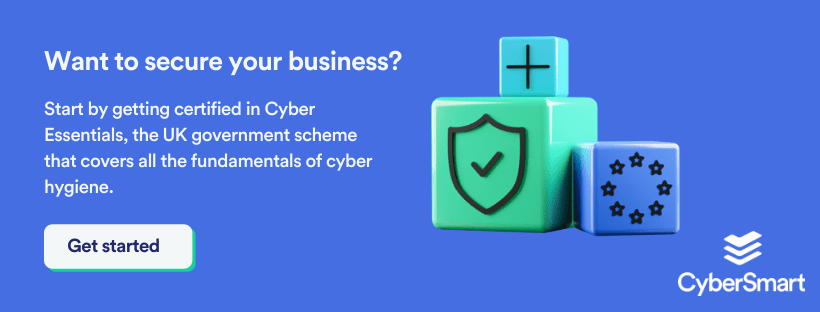Keeping computer systems protected against viruses and other forms of malware is one of the first steps towards cybersecurity for an organisation. This is one of the five key requirements of the Cyber Essentials scheme that organisations need to fulfil. The most effective strategy for meeting this requirement is to make use of an antivirus product that can keep unwanted malicious content and programs away.
However, with a wide variety of antivirus products available out there, it can be difficult to choose the best one for your organisation. When choosing an antivirus solution, organisations need to keep a number of factors in mind including the pricing, features, and platforms it supports.
To assist you in making the right decision, we have listed the top 10 antivirus products that you can use when preparing for a Cyber Essentials certification.
1. Trend Micro Worry Free Advanced
Trend Micro provides comprehensive protection against malware and viruses in the form of its Worry-Free Business Security Advanced antivirus solution. It covers all the basics antivirus features such as real-time scans and scheduled scans and comes with advanced features such as anti-spam, web content filtering, ransomware shield mobile device management, and email security. Additionally, the antivirus software can detect malicious activity through USB ports and external devices to provide security against physical breaches as well.
Platforms it is available on: Android, iOS, Microsoft Windows, macOS.
2. Panda Endpoint Protection Plus
The Panda Endpoint Protection Plus is highly rated as one of the best enterprise antivirus products because of its advanced features and budget-friendly price. The antivirus suite comes with a well-designed management console that enables you to monitor systems in real-time. It can protect your systems against basic as well as advanced threats such as malware, spam, malicious web content, and viruses. Even though this antivirus product can sometimes slow down your computer systems, it is a choice worth considering, particularly for small businesses.
Platforms it is available on: Android, Microsoft Windows, macOS, Linux.
3. Norton Small Business
Norton Small Business provides tailored features to small enterprises, although the protection remains the same as the ones used by large organisations. Other than providing all the basic features for protection, Norton’s Small Business antivirus product provides protection across different devices with a single license. You need a single program to protect both remote and in-office systems and manage them over the cloud. Overall, it is a good value option with a simple installation and configuration process.
Platforms it is available on: Android, iOS, Microsoft Windows, macOS.
4. Kaspersky Small Office Security 5.0
An effective and user-friendly antivirus software that you can use to keep your systems protected is Kaspersky Small Office Security 5.0. According to independent testers, it blocks more than 99% of malware and associated hacking attacks. The features include real-time protection, anti-spam, content filtering, and firewall. The firewall is a welcome feature that can prevent unauthorised access to your data, along with strict control of your browsers that disallow access to malicious web content.
Platforms it is available on: Android, iOS, Microsoft Windows, macOS.
5. Bitdefender GravityZone Business Security
Bitdefender’s GravityZone Business Security is a good option to consider if you want a high level of protection against malware threats across devices. Even though the installation and setup process of this product is quite lengthy, the antivirus software is quite simple to use once you pass those stages. The features include real-time protection, URL filtering, firewall, anti-malware, and web advisor among others. However, unlike most other antivirus products on this list, Bitdefender does not provide device location services for finding lost devices with this solution.
Platforms it is available on: Android, iOS, Microsoft Windows, macOS.
6. Sophos Endpoint Protection
The Sophos Endpoint Protection antivirus is suitable if you are looking for basic protection at a low-cost. Even though it is not as good as the other antivirus products in this list in terms of usability, it does a fair job in keeping away malware and viruses. The plus point is that it is much cheaper than other solutions so it can be a suitable choice for SMEs. The Sophos Endpoint Protection Advanced provides advanced protection feature such as blocking suspicious URLs and monitoring user behaviour to detect threats.
Platforms it is available on: Android, iOS, Microsoft Windows, macOS.
7. ESET Endpoint Security
ESET Endpoint Security is a great all-in-one antivirus solution that provides you with protection against all kinds of malware including trojans, viruses, and ransomware. Like Bitdefender, the ESET can be difficult to install and configure but once everything has been set up it works perfectly in protecting the devices within your organisation. Other than its good overall performance, its adjustable pricing policy makes it an option worth considering for SMEs.
Platforms it is available on: Android, iOS, Microsoft Windows, macOS, Linux.
8. McAfee Endpoint Security
McAfee Endpoint Security is a cloud-based antivirus product that helps you secure and protects all internet-enabled devices within your organisation. It provides a variety of features that help in preventing, detecting, and eliminating malware from computer systems. The excellent customer support provided via multiple channels (email, live chat, and phone) make this a good choice for an antivirus solution.
Platforms it is available on: Android, iOS, Microsoft Windows, macOS.
9. Symantec Endpoint Protection
Symantec is a renowned company in the cybersecurity industry, particularly because of its feature-rich product. The Symantec Endpoint Protection Business is widely appreciated because of its high-performance and functionality. It provides a range of advanced protection features including intrusion prevention, firewall, behaviour monitoring, multi-level security policies, remote data management, and device location.
Platforms it is available on: Android, iOS, Microsoft Windows, macOS, Linux.
10. Avast Business Antivirus Pro
Avast Business Antivirus Pro is a reliable antivirus product that comes with a range of malware protection features. The antivirus software provides advanced protection features including browser protection, firewall, anti-spam, remote control options, email protection, and basic antivirus. It provides protection against third-party software installation by providing sandboxing that enables you to run applications in a ‘secured’ environment.
Platforms it is available on: Android, iOS, Microsoft Windows, macOS.
Conclusion
Regardless of how small or large an organisation is, one of the key steps that it can take to protect itself against cyberattacks is to use an effective antivirus solution. This is a major requirement that organisations must meet in order to be compliant with Cyber Essentials.
CyberSmart is an automated compliance service that helps organisations simplify the process of getting certified with leading standards such as Cyber Essentials. If you have any questions about which antivirus product you should choose for your business, get in touch with our experts right away.








